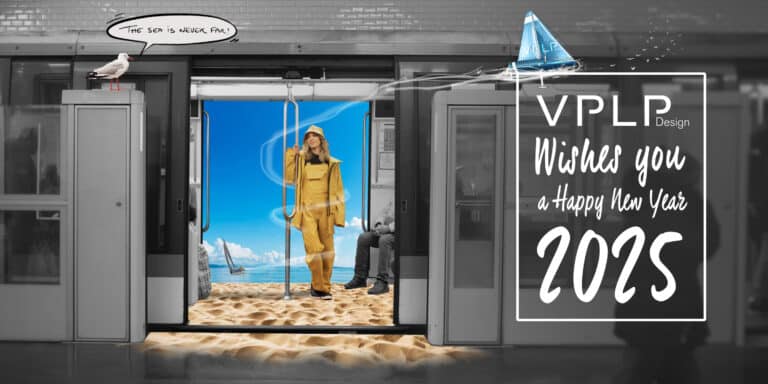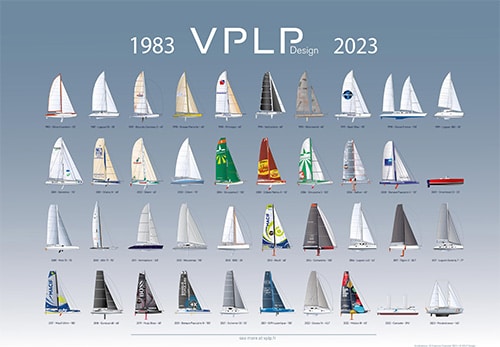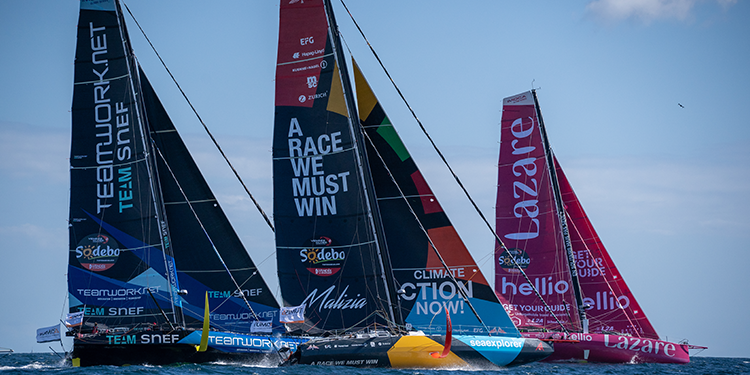Are speed and comfort compatible with a blue-water catamaran? That’s the question the GP70 was designed to answer. Mathias Maurios, Partner Naval Architect and head of VPLP’s Cruising Division, explains how this atypical sailboat is pioneering a new concept.
“We started out with the demanding specifications of the owner who wanted a fast, high-performance ocean-going boat which would nevertheless provide a comfortable ride over long distances,” says Mathias Maurios concerning the GP70. Catch Me, the first boat in the series, was completed in July 2023 at the Trimarine yard in Lisbon. Her lines are practical yet classically elegant. “With the single line of her gunnel stretching from bow to stern, her sides are very sober in design. Her taut lines, such as those of the coachroof, give her a timeless style,” says VPLP’s head of Cruising, who contributed to the design of this 70-foot catamaran. The GP70 was produced entirely by VPLP Design under the expert supervision of designer Patrick le Quément.
From the preliminary studies to the structural calculations, the aim was to design a catamaran which was “hardy, practical and coherent with the owner’s sailing ambitions.” As a result, the GP70 features two tillers with bucket-seats instead of the more traditional steering wheels. “You can really get a great feel for the boat and enjoy yourself at the helm,” says Mathias Maurios who, after personally testing the catamaran, was delighted to discover her precision and responsiveness. “She doesn’t need much wind to pick up speed before killing the engine. And that’s where this cruising boat reveals her capacity for performance, as she can reach speeds of 25 knots on a smooth sea and above all, log impressive averages too.”
Ripe for a limited series?
Carrying 219 m² upwind, the GP70 catamaran is 80% carbon sandwich sheet for a displacement limited to 22 tonnes, making her one of the lightest yachts in her 21-metre category. “We used carbon fibre where it made sense to, such as for the deck, the superstructures and all the bulkheads. But the hulls are made of glassfibre and are unlined, so as to avoid the resonance effect and ensure acoustic comfort. The accommodations are very light and integrated into the structure wherever possible,”concludes Mathias Maurios. He also highlights the functionality of the boat which can accommodate up to eight passengers in the internal living areas, and two crew members.
A locker for waterproofs in the cockpit next to the entrance to the saloon, large stowage lockers outside and forward of the superstructure, and retractable engine controls are just some of the features that adhere to the philosophy of finding the right compromise to maximize space. Another characteristic of this blue-water sailer is the absence of a generating set. Her considerable energy independence relies on the combination of low-power electrical equipment, large solar panels and wind generators.
Designed for long-distance cruising, the GP70 benefited from the meticulous craftsmanship of the Trimarine yard whose reputation for high-quality work is second to none. Over the last twenty years the yard has worked on projects for the America’s Cup Class, TP 52, Volvo 70, the IRC… The Portuguese shipyard and the owner of Catch Me, who also owns the female moulds of the boat and the internal structures, intend to build a limited series of this multihull sailing boat which, in its own way, redefines the standards of leisure sailing and ocean cruising.






